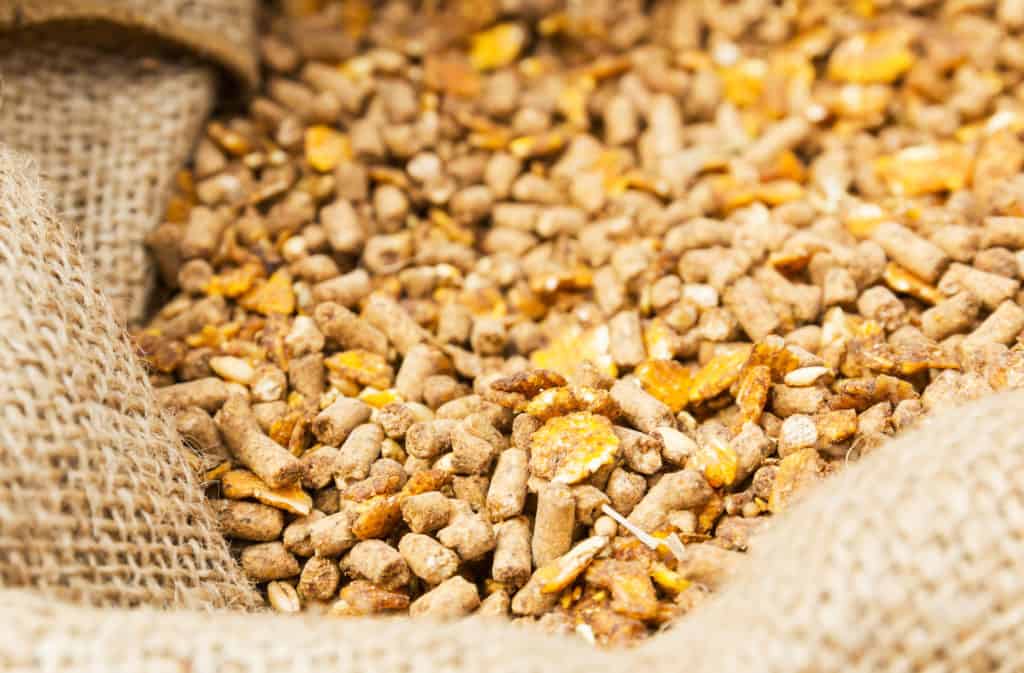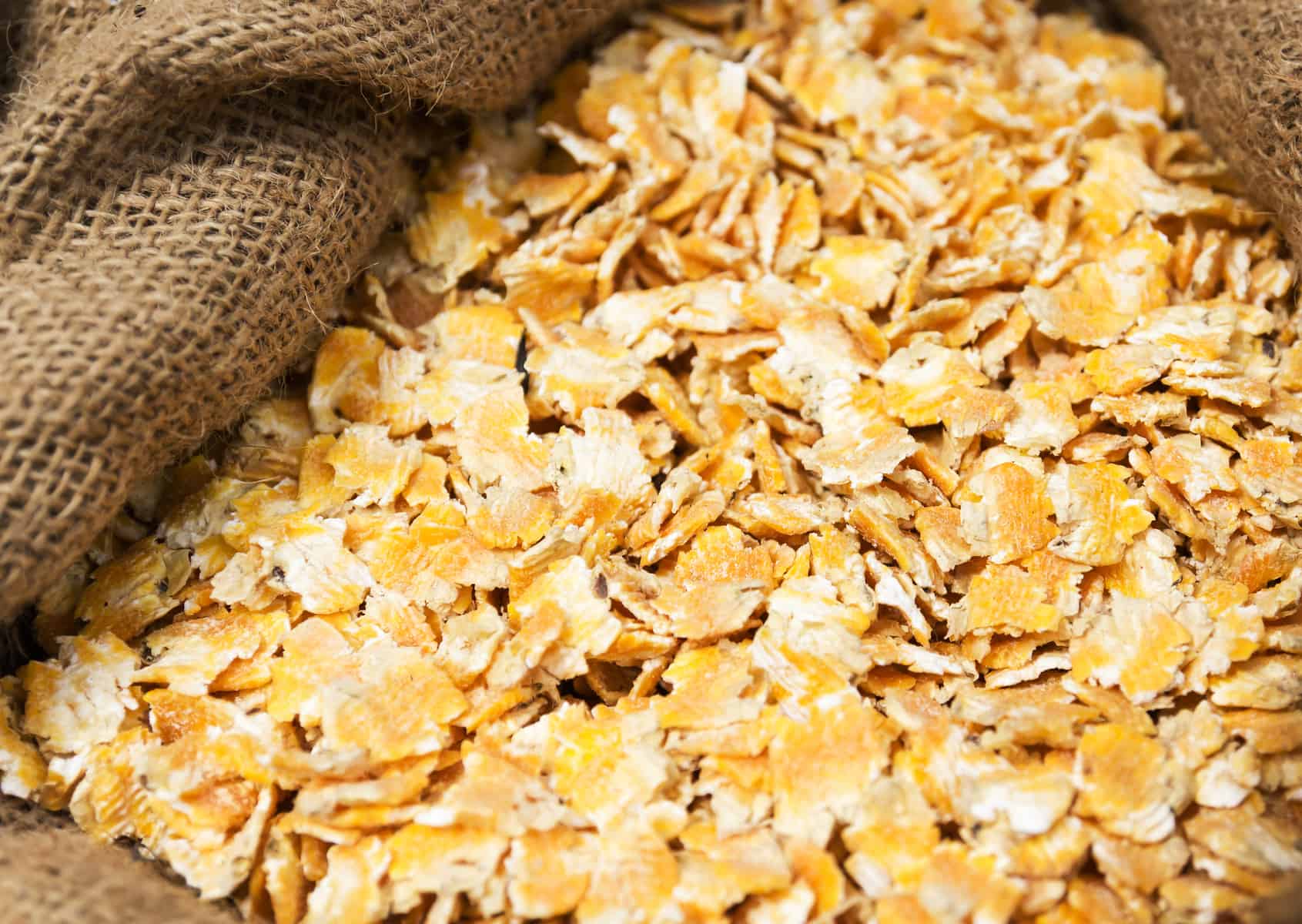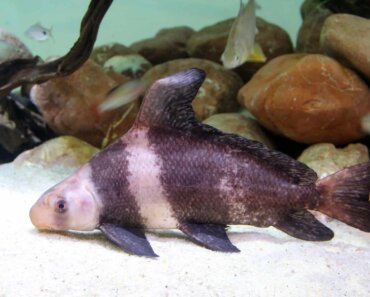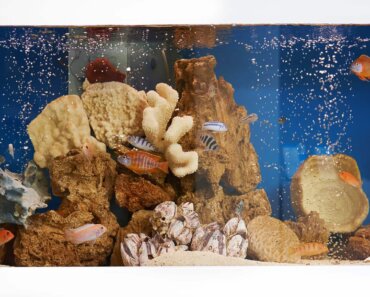It might seem like a simple question, but did you know that there are over 30,000 different species of fish all with their own dietary needs? And yes, this includes sharks (though humans are not usually on the main menu)!
When considering which fish foods to buy for your aquarium, you must first consider what kind of eater your fish is by way of evolution as well as what food your fish is most likely to come across in the wild. Only then can you begin answering “What do fish eat?”.
Keep reading to find out everything you need to know about fish diet and the many types of fish food available!
What does a fish like to eat?
There are largely three different categories that the preferred diet of your fish will fit into: carnivorous, herbivorous, or omnivorous.
Carnivores
Carnivorous fish are ones that get most of the energy that they need to survive from a meat-based diet. This can include insects, other fish, and other invertebrates (worms, snails, shrimp, etc.).
Some predatory fish are active hunters that will either chase down prey, like sharks, or wait for the food to come to them. For example, the anglerfish uses a lure above its head to ‘fish’ for small fish in some of the deepest parts of the ocean.
Fish that exhibit these behaviors will usually have a larger mouth, like bass and groupers. Some carnivorous fish will also have large teeth and have a more aerodynamic body for quickly swimming through the water, like barracuda.
Other species resort to scavenging; these fish clean up after other sea life in more ways than one. Most of these species available will be a catfish or loach, as they catch all the food that has sunk to the bottom of the tank. Likewise, cusk-eels can be seen along the bottom of the ocean searching for sunken particles, especially taking a liking to larger carcasses like those of whales.
However, you’re not likely to find these listed species in your local pet stores! Some of the most common carnivorous aquarium fish are specific types of cichlid, arrowana, and piranhas. Live food and frozen food, like feeder fish, brine shrimp, mosquito larvae, worms, mollusks, and other invertebrates should regularly be offered to your carnivorous fish.
Herbivores
Herbivorous fish are ones that get most of the energy that they need to survive from a plant-based diet. This mainly includes algae and plants in the wild but pet fish can also be supplemented with fruit and vegetable matter in the aquarium.
Herbivorous fish are usually constantly grazing on rocks, substrate, wood, or other areas that have grown algae. These fish will often have flat teeth or a beak that helps pull off algae, like some tangs, blennies, plecos, and parrotfish. Some of these fish eat algae from coral reefs and are important for keeping a healthy balance between corals and algae.
However, there are not many species of fish that can truly be categorized as herbivorous and most will need a balanced diet of animal- and plant-based foods. Most herbivores you see at your local pet store are difficult to keep; they need to be constantly grazing so food needs to be abundant. Sadly, many of these fish actually starve once introduced into the aquarium due to the lack of things to eat, but supplementing their diet with algae wafers and pieces of seaweed can help!
Omnivores
Most fish you’re likely to come across in your local pet store will be omnivorous; this means that you will need to provide your fish with a balanced diet of meats and greens. These are some of the easiest pet fish to care for as they’re most likely to accept any food you give them!
While some fish may be labeled as omnivores, there are some species that actually tend to lean to one side of the spectrum and should be given a more meaty diet than a plant-based diet and vice versa. It would be best to research the natural environment and diet of your fish so that you can provide the right ratio of food.
Once you’ve figured out what your fish eats in the wild, fish diet is easy. Most commonly, omnivores can be fed a selection of fish flakes and algae wafers. Live food, frozen food, and freeze-dried food may regularly be supplemented to keep your fish interested and healthy.

Others
There are some other species of fish that require a very specific diet that doesn’t fit into an exact category. Many of these fish species are actually keystones which help regulate the natural food chain.
While bass are primarily carnivores, similar fish like trout and freshwater bream actually eat a lot of insects. This means that these fish greatly help monitor insect populations, especially those of invasive species.
Another fish diet that doesn’t quite adhere to a specific category is that of wood-eaters; the Panaque genus contains about 10 different species and the Hypostomus genus has close to 30 that all rely on wood to supplement their diet. While this is mainly in efforts to scrape the algae off the surface, consuming wood is believed to help fiber levels and may be further broken down internally for additional micro-organisms.
Next are cleaner fish and invertebrates who actually eat parasites, dead skin, and other alien microbes off of other sea life. Some species of these fish and invertebrates sometimes set up “cleaning stations” where they wait for other fish to come by. Then, they clean the exterior of the fish, sometimes even venturing into the mouth and under the gill flaps.
However, these fish do not entirely depend on just cleaning to survive. Many of these species are also scavengers and will eat other available food. Some popular species include cleaner wrasse (Labroides dimidiatus) and the cleaner shrimp (Lysmata amboinensis), with some lesser-known species being orange chromide (Etroplus maculatus) and the juvenile striped Raphael catfish (Platydoras armatulus).
FAQ
How often should I feed my fish?
It is recommended to feed your fish at least once a day with two light feedings per day being the maximum. However, some fish heavily rely on the food that is already naturally in your tank, like algae eaters and sand sifters, so sometimes it is more important to have concentrated feedings. On the other hand, some fish, like the peacock eel, will also not eat every day.
Offering too much food will result in excess nutrients in your system that can lead to an algae bloom, so finding the balance of fish food that enters your tank is important.
Do fish eat bred?
While bread has commonly been a popular bait food for fish, it is not healthy and shouldn’t be used. Bread can actually expand in the fish’s digestive tract and cause it to become constipated. This, in part with your fish not being able to process all the ingredients of bread, can ultimately shorten the lifespan of your fish and cause serious discomfort.
Can I make my own fish food?
Yes! Because offering live food carries the risk of introducing parasites into the aquarium and can be difficult to provide a steady supply, many hobbyists turn to culturing their own.
If you’re interested in starting your own fish food culture, we have guides for:
Does my fish have swim bladder issues?
Swim bladder disorders are pretty common for beginners and can become a permanent condition. In short, swim bladders are an organ that allows your fish to swim throughout the water column with ease. Once something interferes with the natural function of this organ, the fish may not be able to swim correctly, floating to the top on its sides or front and back.
This is likely due to overeating, constipation, or gulping too much air; it can also be caused by an internal parasite or infection. To make it easier for your fish to swim, try:
- lowering the water level
- raising the water temperature and dosing aquarium salt
- reducing water flow
Next, you have to figure out what caused the problem and how you can go about fixing it. Note that some swim bladder issues are irreparable.
- test aquarium water to make sure that all levels are ideal
- do not offer your fish any more food for the two days (48 hours) after displaying symptoms
- begin offering shelled peas
- at the same time, begin dosing aquarium salt
- if symptoms persist, try dosing medications

Conclusion
So what do fish eat? A lot of things! And not all fish eat the same thing or have the same feeding behavior; some are carnivores, some are herbivores, and others are somewhere in between.
Do research on the natural environment and feeding tendencies of where your fish comes from, and try to replicate that in an aquarium setting. Balance the health of your fish with the overall health of the system, and do not overfeed.
If you have any questions about fish food or have experience regarding different kinds of foods, don’t hesitate to leave a comment below!


























